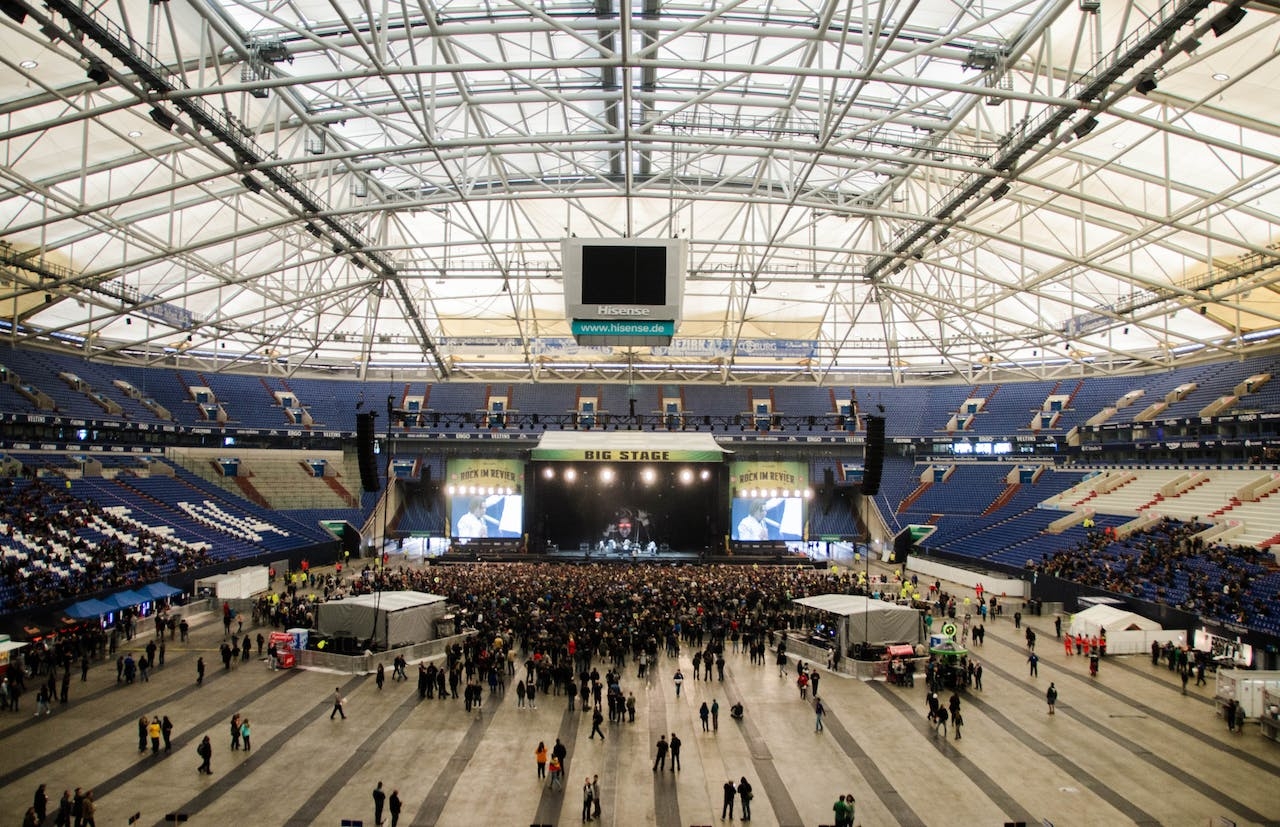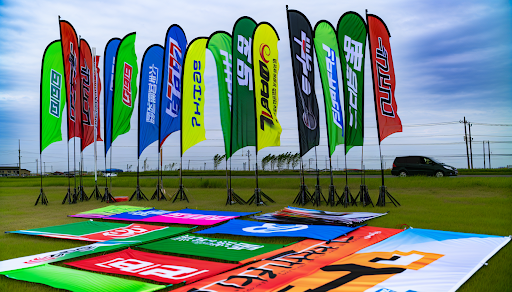Top Strategies for Branding an Event: Create a Lasting Impression
By Morten Numrich · 7. February 2024
Branding an event is your ticket to distinguishing your gathering in a crowded market.
Why does it matter, and how can you make it work for you?
We cut to the chase to answer just that, offering insider tips on tailoring an event brand that aligns with your message and leaves a lasting impact on attendees.
Get ready for a step-by-step guide through the essentials of event branding, from crafting a compelling visual identity to leveraging digital branding tools for maximum engagement.
Key Takeaways
- Branding your bash is about telling a tantalizing tale, not just logo-bombing the place. Weave in your vision, vibe, and values from the event to the stage design.
- Consistency is the secret sauce of event-branding success—it ties together your tweets, totes, and talk tracks, making a sticky brand memory that just won’t quit.
- Before, during, and after the bash, hit ‘em with memorable merch, make digital waves, and keep whispering sweet nothings via email to keep that brand love burning.
Defining Event Branding: Crafting Your Event’s Identity
 event hall
event hall
Event branding isn’t just about slapping your logo on everything. It’s about creating a cohesive and engaging story that resonates with your attendees.
Think of it as constructing a personality for your event, complete with its own style, tone, and message.
To achieve this, carefully consider the best event branding elements that will best represent your vision, including the event theme.
A clear vision🔭 of the event’s objectives and the intended target audience is essential for crafting a successful event brand.
This vision informs everything from the logo and website to the event and marketing materials.
With thoughtful event branding, you’re not just organizing an event; you’re crafting an immersive and memorable experience that aligns with your brand promise and leaves a lasting impression.
The Significance of Event Branding in Business Growth
Event branding is more than just a creative exercise. It’s a powerful tool for business growth, making event branding important.
A memorable event brand not only makes a significant statement but also fosters credibility, loyalty, and recognition among your audience.
By implementing effective event branding strategies, you can ensure the success of your event and create a lasting impact.
In fact, consistent, onsite branding across across channels can lead to a revenue increase of up to 23%.
More than just a financial boost, event branding also helps to attract new audiences and foster long-term customer engagement.
Be it corporate events or outdoor festivals, thoughtful event branding paves the way for business expansion.
Pillars of Event Branding
Successful event branding takes time and is not a haphazard process. It rests on three core pillars – visual identity, messaging and tone, and digital presence.
Each pillar plays a critical role in creating a memorable and consistent brand experience.
We’ll delve into each of all these elements here.
Visual Symphony: Design Elements That Speak Volumes
 event hall design
event hall design
The visual identity of an event brand is like its wardrobe. It’s what makes the brand recognizable and memorable.
At the heart of the visual identity are elements like logos, color schemes, and stage design.
For instance, the color scheme of your event can elicit specific emotional responses from your attendees, including positive emotions. Some examples include:
- Blue instills trust
- Red incites energy
- Yellow promotes optimism
- Black suggests sophistication
The strategic design of stage and audio-visuals plays a critical role in magnifying the branding message and enhancing the speaker sessions overall attendee experience.
The Voice Behind the Brand: Messaging and Tone
Just as a person’s tone of voice can convey their mood and intention, the messaging and tone of your event brand convey its personality and purpose.
Consistent messaging and a catchy tagline are integral to creating a recognizable and cohesive brand voice.
Ensuring your event video brand voice resonates with your audience requires a keen understanding of their social media behaviors.
Understanding their social media behaviors is key. By engaging your audience through social media polls, surveys, and timely responses to feedback, you can sustain and amplify interest in the event.
Digital Presence: Leveraging Websites and Social Media Platforms
In today’s digital age, your event’s online presence is just as important as its physical one, if not more.
Your event website serves as the event’s hub, setting the stage for the brand by sharing information on:
- the event’s purpose
- dates
- registration
- speakers
- sponsors
- merchandise
- FAQs
In addition to your website, social media platforms play a crucial role in maintaining brand consistency and engaging your target audience. Some benefits of using social media analytics include:
- Insights into user response
- Optimal posting times
- Tone of voice
- Effective content types
These insights contribute to stronger brand awareness and social sharing.
Ingenious Event Branding Ideas to Ignite Excitement
Having grasped the basics of event branding, it’s time to unleash your creativity.
Creative event branding ideas can ignite excitement and enhance attendee engagement.
From gamification to unique hashtags to event apps, there’s no shortage of ways to make your event stand out.
Interactive Experiences That Captivate
 VR experience
VR experience
Incorporating interactive experiences can instantly elevate your event from ordinary to extraordinary, creating significant events that attendees will remember.
For instance, incorporating a branded scavenger hunt or a photo📸 booth can engage attendees actively while embedding brand messaging within the experience.
Or why not utilize a unique and consistent hashtag for the event?
This can encourage attendee engagement on various social media channels and facilitate tracking of the event’s online impact.
The possibilities are endless, and the goal is simple: create captivating experiences that leave a lasting impression.
Merchandise Magic: The Power of Event
 merch design
merch design
While events may seem like a simple fun freebie, it indeed serves as a potent branding tool.
High-quality notebooks with embossed logos, customized water bottles, and tech items like Bluetooth speakers provide a lasting reminder of the brand long after the event.
But don’t just stick to the tried-and-true. Unique and creative event items can differentiate a brand and ensure it is remembered post-event.
So, whether it’s stress balls, custom embroidered patches, branded takeaway packaging, or corkcicle tumblers, make sure your event is as memorable as the event itself.
Incorporating Consistent Branding Across All Touchpoints
Consistency is key in event branding. By maintaining a consistent brand presence at each point of contact, you can eliminate attendee confusion and ensure your event stands out among similar ones. This means:
- Keeping your messaging and formatting consistent in social media posts
- Maintaining consistency across various marketing channels
- Ensuring staff interactions with attendees align with your brand
After all, a unified event strategy observed by Sales and Marketing teams contributes to seamless brand presentation and messaging before, during, and after the event.
Crafting a Virtual Event With Impact
With the rising popularity of virtual events, learning to craft an impactful virtual event becomes more critical.
Just like an in-person event, a virtual event needs to incorporate live polls, Q&A sessions, and engaging event platforms to enhance attendee engagement.
A well-designed virtual event platform can provide an immersive online experience by tailoring the attendee experience with curated content and integrated analytics.
And don’t forget about the power of a branded event app, which can enhance engagement by offering attendees accessible schedules, customer service, interactive surveys, and community forums.
Measuring the Impact: Evaluating Your Event’s Success
Evaluating your event’s success forms a vital aspect of event branding. After all, you can’t improve what you don’t measure.
Metrics📈 like gross revenue, new lead generation, and customer acquisition can offer valuable insights into the event’s impact on sales and revenue.
In addition, metrics like event check-ins and Net Promoter Score (NPS) can provide insights into attendance and can drive attendee engagement and loyalty.
These can help inform future event strategies and measure the effectiveness of your event branding efforts.
The Role of Email Marketing in Event Branding
In the realm of event branding, email marketing stands as a potent tool. It allows you to maintain consistent communication with prospective attendees and promote the event’s unique identity.
In fact, consistent branding using designated templates with brand colors, fonts, and logos is essential in email communications to prevent attendee confusion.
Moreover, segmentation and personalization in email marketing can foster increased relevance and engagement, leading to heightened trust in the event’s brand.
Automated email campaigns can save time and ensure consistency, while A/B testing can identify the most effective campaign elements, improving attendance metrics.
Maximizing Outdoor Event Branding Opportunities
 event branding
event branding
Unique branding opportunities abound in outdoor events. From flags and banners to portable marketing tools, there are plenty of ways to make your mark.
Of course, you’ll need to choose sturdy and weather-resistant outdoor branding materials to ensure consistent brand presence regardless of weather conditions.
Another tip is to utilize visually diverse flag types like feather flags, teardrop flags, and rectangle flags to enhance outdoor event branding.
And don’t forget about the power of portable outdoor marketing tools like flags, tents, and gazebos, which can be transported and repositioned easily to capitalize on customer gatherings and ensure repeated use across various venues.
Building Anticipation: Pre-Event Marketing Techniques
A key part of event branding involves building anticipation before the event.
Teaser📢 campaigns, informative blog posts, print media, and social media engagement can all serve to drum up excitement and interest in the event.
One effective strategy is to create a Facebook event page as a centralized hub for potential attendees.
Regular updates, exclusive content, and targeted promotion onsite event can all help to cultivate a sense of community and anticipation for the event.
Long-Term Strategy: Fostering Attendee Loyalty Post-Event
The conclusion of the event doesn’t mark the end of attendees experience with your work.
Fostering attendee loyalty post-event is crucial for ensuring continued engagement with the brand or organization.
This involves maintaining communication, offering exclusive content, and implementing loyalty programs to encourage repeat attendance.
Remember, hosting post-event meetups or reunions can continue the networking and community-building that started at the event, fostering ongoing relationships.
And don’t underestimate the power of a simple thank-you message.
Sending personalized thank-you messages to attendees after an event can make them feel valued and increase their likelihood of returning.
Best Practices for Team Collaboration in Event Branding
Successful event branding hinges on effective team collaboration. By ensuring consistent messaging, co-branding opportunities, and improved participant conversions, your team can make your next event such a success🎊.
Remember, sponsors and speakers can magnify event branding by sharing event details, adopting promotional ideas, and leveraging their networks.
Also, co-branding with speakers via presentation branding connects the audience to the event through a trusted and familiar face, fortifying the event’s overall brand message.
Summary
It’s time to wrap things up. Sum up the key🔑 points from each section, and end with an inspiring phrase to encourage the reader to start implementing what they’ve learned.
Frequently Asked Questions
Why events are important branding?
Events are important for branding because they offer a unique and engaging experience that leaves a lasting impression and boosts brand visibility.
What is the 4 key of element branding?
To create a strong brand, focus on developing a solid brand identity, brand image, brand culture, and brand personality.
That’s the key to successful element branding!
How do you brand a venue?
Brand your venue by decorating it with your company logo and branding throughout the space, such as using monogrammed napkins and branded placeholders, to ensure your brand stays top of mind for your guests.
Use consistent signage and graphics that reflect your company brand, logo, fonts, and style to communicate your brand and add visual appeal to the venue.
How do you make your brand stand out at an event?
To make your brand stand out at an event, offer unique and shareable experiences that encourage social media sharing and engagement.
Think interactive installations, photogenic backdrops, or exclusive performances.
What is meant by corporate events?
Corporate events are gatherings organized by companies, meant for employees, stakeholders, and sometimes clients or the public, based on the event’s purpose.
They serve various goals such as educating staff or promoting company concepts.

